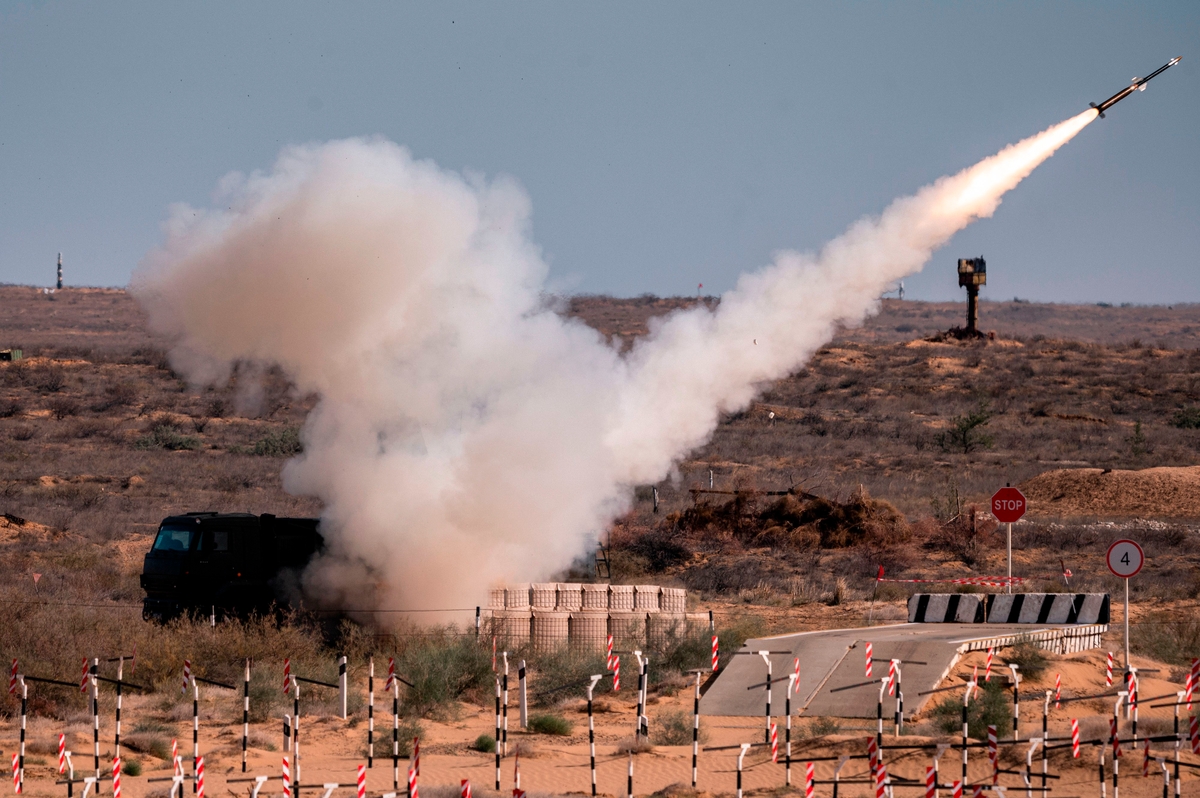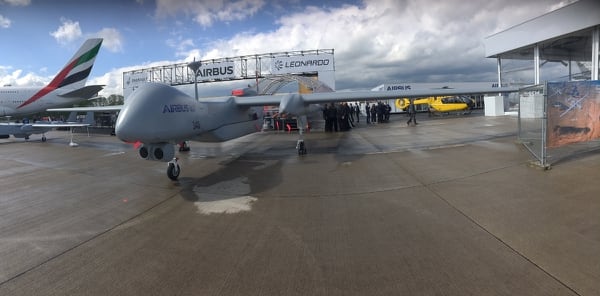
First there was the video from Libya of a Turkish drone destroying a Russian Pantsir missile defense system.
Next came the veteran S-300 air defense system — also Russian — being taken out in Nagorno-Karabakh by an Israeli-built Harop loitering munition.
In the conflicts in Libya and Nagorno-Karabakh last year, unmanned platforms often made short work of the ground-based systems designed to neutralize them, paving the way for easy attacks on vulnerable troops.
What is more, experts say, is that the balance of power between drones and air defense systems is shaping up to be a key to global wars in the near future.
“Libya, Nagorno-Karabakh and also Syria have just showed us that if a fielded force cannot protect its airspace, then the large scale use of UAVs can make life extremely dangerous,” said Justin Bronk, an air force research fellow at the Royal United Services Institute in England.
Turkey’s Bayraktar TB2 armed drone grabbed the headlines during the Libya conflict last year, which saw Turkey deploy the platform to defend the U.N.-backed Tripoli government against strongman Khalifa Hifter, who relied on Russian Pantsir systems.
Able to fire their Roketsan munitions from outside the range of the Russian systems, the TB2s scored hits, helping stop Hifter’s advance.
“Turkey also sent in engineers who improved the software of the drones on the fly, while there was no similar learning curve with the Chinese UAVs operated by the UAE to assist Hifter,” said Jalel Harchaoui at the Switzerland-based Global Initiative Against Transnational Organized Crime.
“The bold and effective use of TB2s in Nagorno-Karabakh in October was made possible by the previous success in Libya,” he added.
An enclave belonging to Azerbaijan but governed by breakaway ethnic Armenians, Nagorno-Karabakh has been a flashpoint between Azerbaijan and Armenia for years. It exploded in a brief and bloody war between September and November.
Turkey, which backed Azerbaijan, reportedly sent in UAV trainers ahead of the conflict. TB2s alongside Israeli loitering munitions were soon racking up successes, with Dutch warfare research group Oryx reporting 134 Armenian tanks destroyed compared to 22 lost by Azerbaijan.
“Turkey built up its UAV expertise after leasing Israeli UAVs, then put that expertise to use building its own after frustrations over the limits placed on its use of the Israeli systems,” Bronk said. “The TB2 has a similar aerodynamic profile to the Heron, while the Turkish Anka UAV is similar to the Hermes 450.”
Manufacturer Bayraktar has sold the TB2 to Qatar and Ukraine, while Serbia is eyeing a purchase, raising the TB2′s profile as a competitor to the Chinese Wing Loong II, 50 of which have been exported.
“China and Turkey are vying for sales, which begs the question: Why doesn’t Russia have the equivalent of a TB2 to sell? I am very surprised they are almost absent in this market,” Harchaoui said.
The drone’s contribution to the hostilities in Nagorno-Karabakh came with a price, as Canada suspended arms exports to Turkey amid claims the TB2 contained Canadian parts, while a U.K. firm supplying parts to the drone also canceled its contract.
A number of nations, including the U.K., are meanwhile beefing up their defenses for ground forces, said Bronk.
“In light of this threat, the British Army has recently ordered a short/medium-range [surface-to-air missile] system called Sky Sabre. If deployed forward in significant numbers, it should dramatically reduce the Army’s vulnerability to both surveillance and attack by hostile UAVs in situations where friendly air cover is unavailable,” he said.
Drones are not, however, invulnerable, he added. “U.S. and British Reapers and Predators in Syria had lots of problems with Russian electronic warfare. Since the Reaper can be targeted, you can imagine that less sophisticated platforms can be more easily affected,” he said.
Bronk expects that more militaries will spend more money on air defense to balance out the drone threat — “particularly countries which don’t have strong air forces.”
“One option is the Russian SA-17 system, which has a 75-kilometer range compared to the 10 kilometers of TB2 missiles, or the cheaper and more contained SA-15 with a 10-kilometer range. Western products include the [National Advanced Surface-to-Air Missile System] NASAMS, which already helps to defend Washington, D.C., with a roughly 15-kilometer range and the NASAMS 2 with a 30- to 40-kilometer range,” he said.
Peter Roberts, the director of military sciences at the Royal United Services Institute, said the world is waking up to the reality of modern warfare. “For a while there was the romantic view that either drones or tanks or missiles would win wars on their own,” he said. “There is no silver bullet on the battlefield, and this is an era which is rediscovering that.”
Roberts added that urban warfare is also undergoing a revival, as is the art of deception in war. “Whether it’s the Russians in Ukraine or the Iranians, the use of decoys is back — something we once knew about, then forgot in the 1990s.”
The world is also returning to an era of proxy wars, he said, from Libya to Nagorno-Karabakh to Yemen.
“That means wars fought on the edge of great powers using mercenaries and sponsored guerilla groups and insurgents,” he said. “It also means more sophisticated weapons in the hands of smaller, nonstate groups like the Houthis in Yemen using cruise and ballistic missiles and drones. It is potentially very nasty.”

The drone defense dilemma: How unmanned aircraft are redrawing battle lines
Countries are scrambling to equip their forces with deployable air defense weapons to counter the rising threat from drones.





